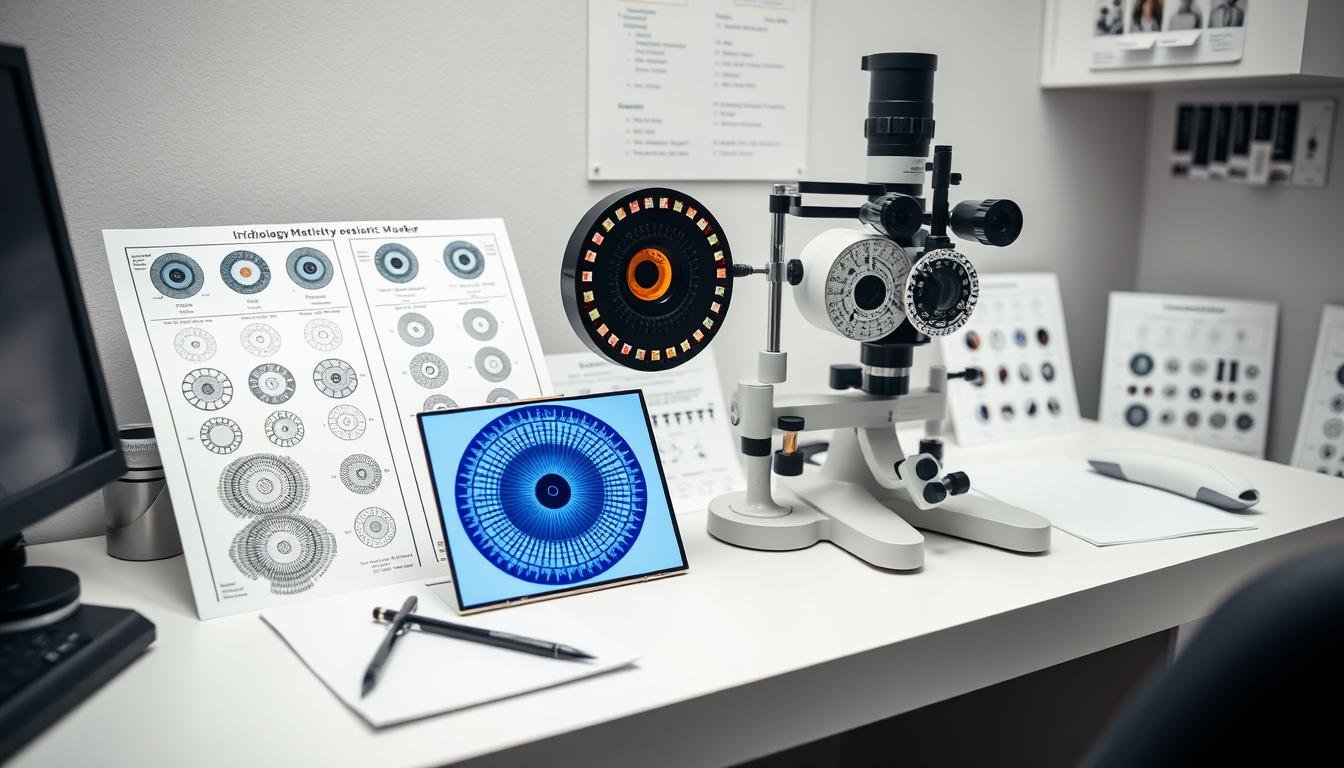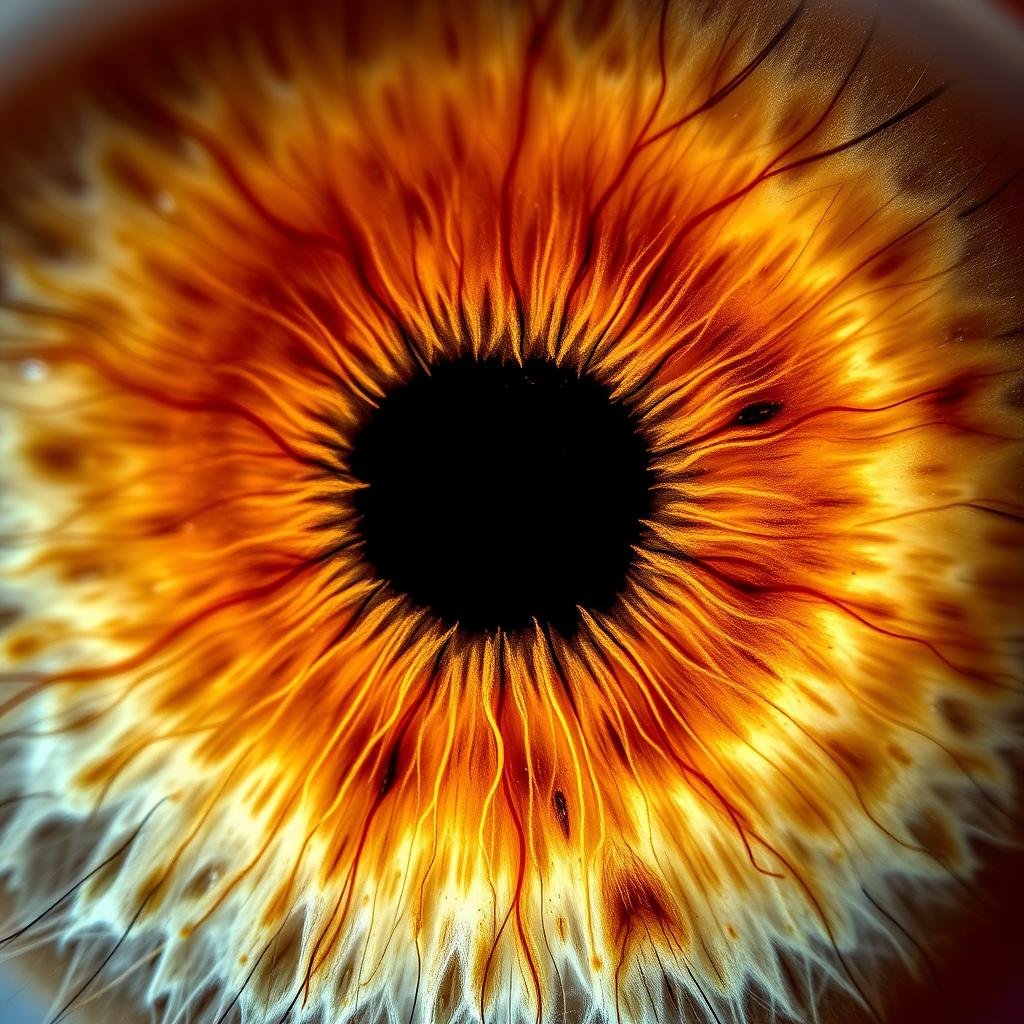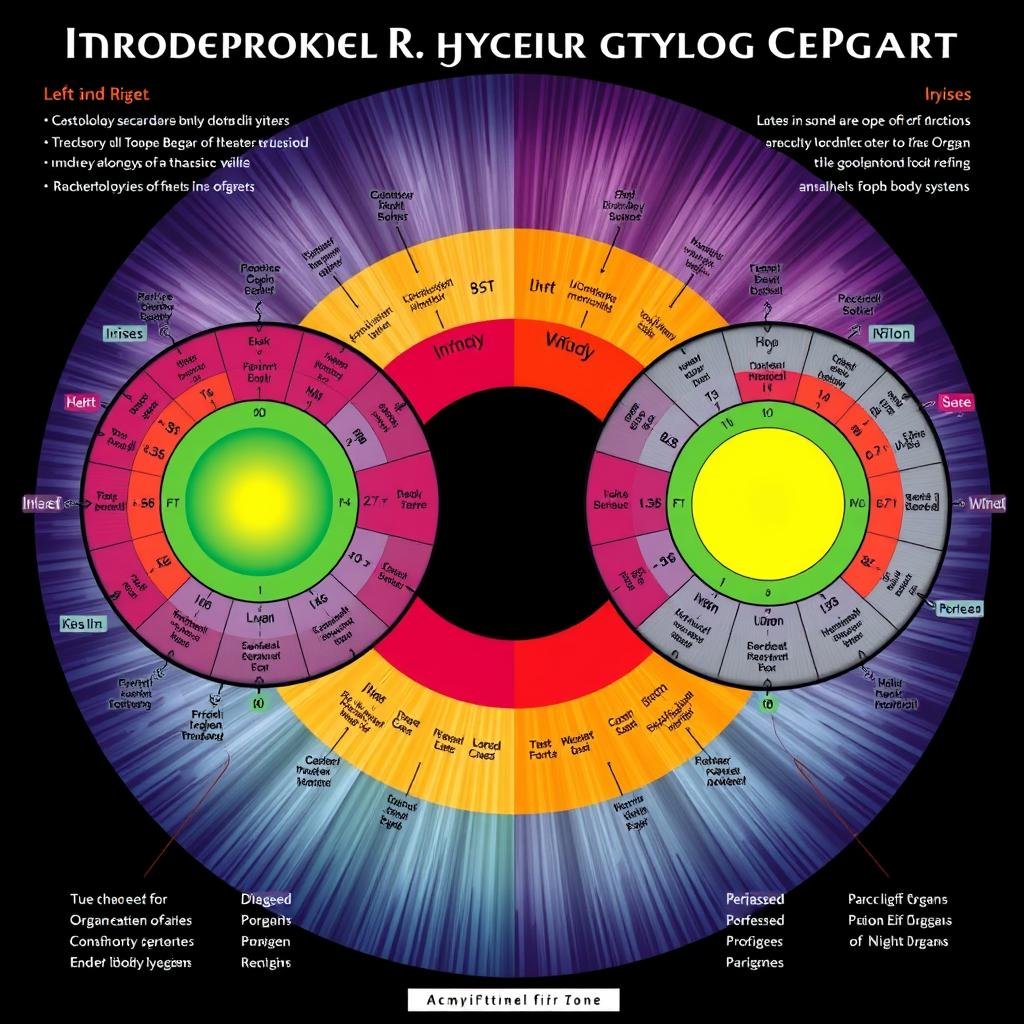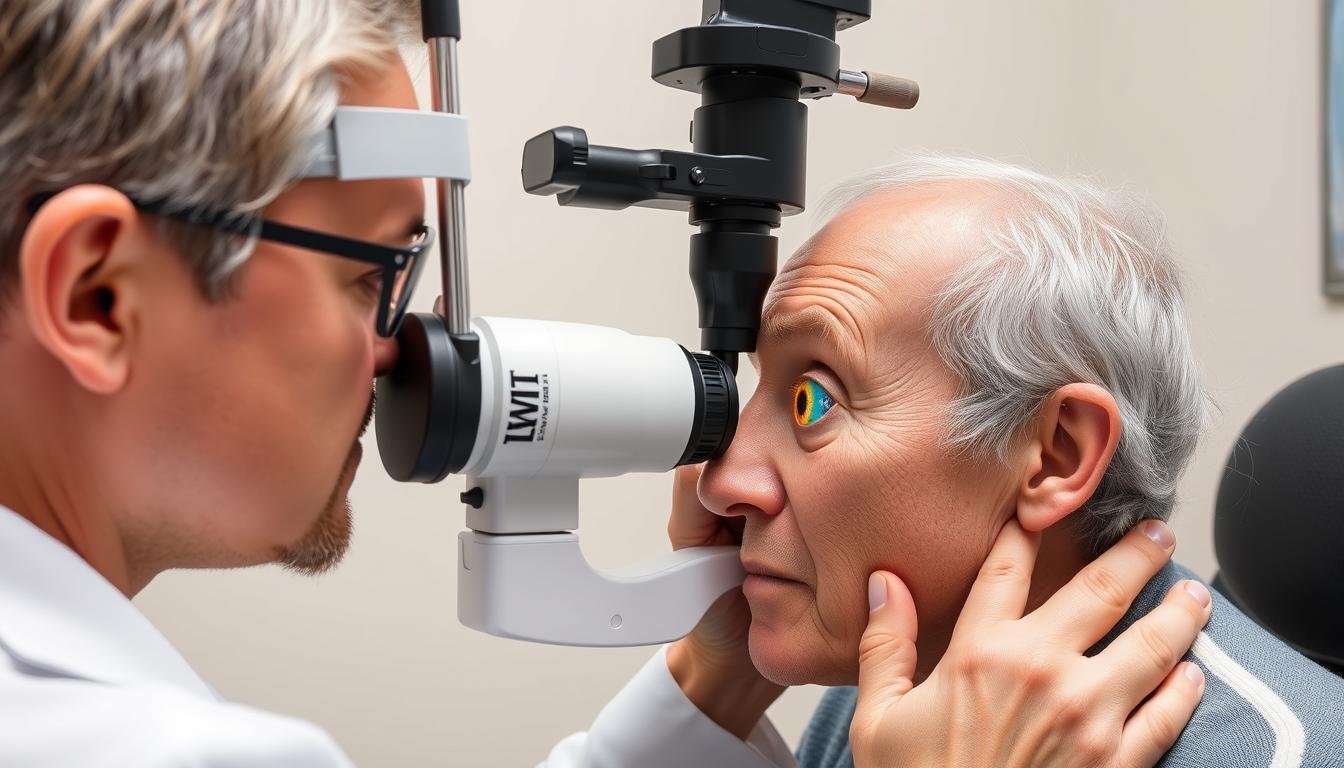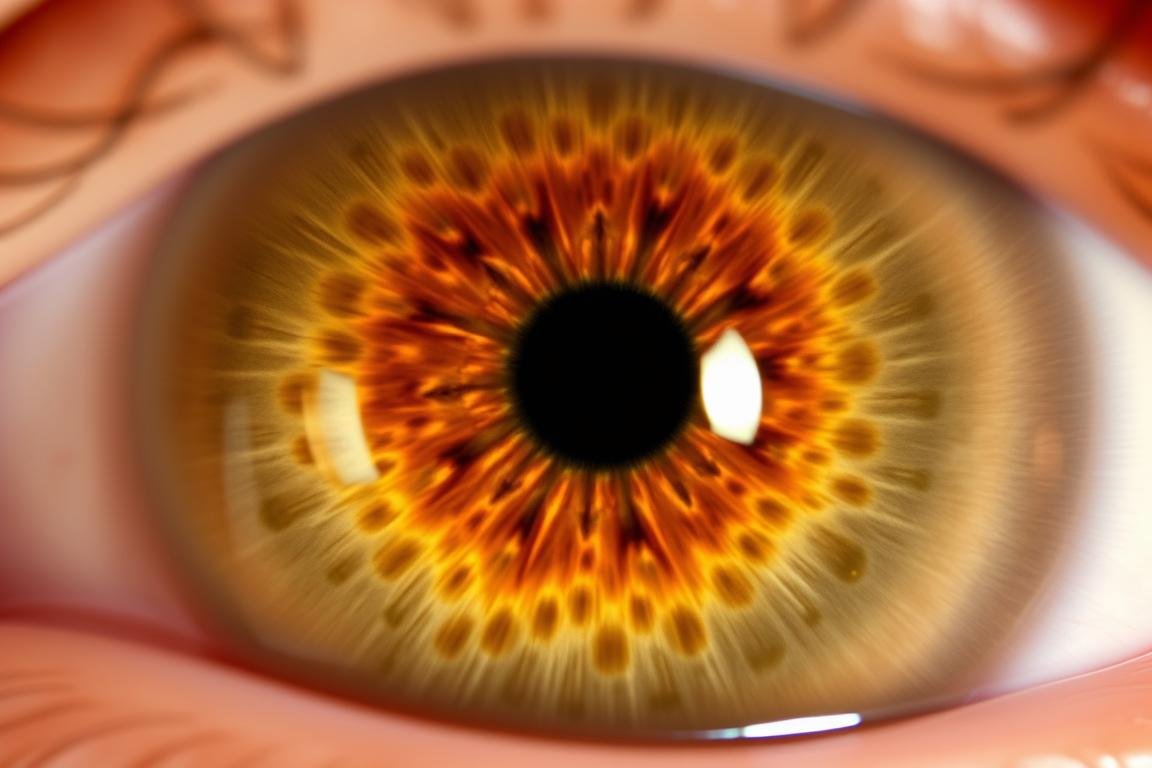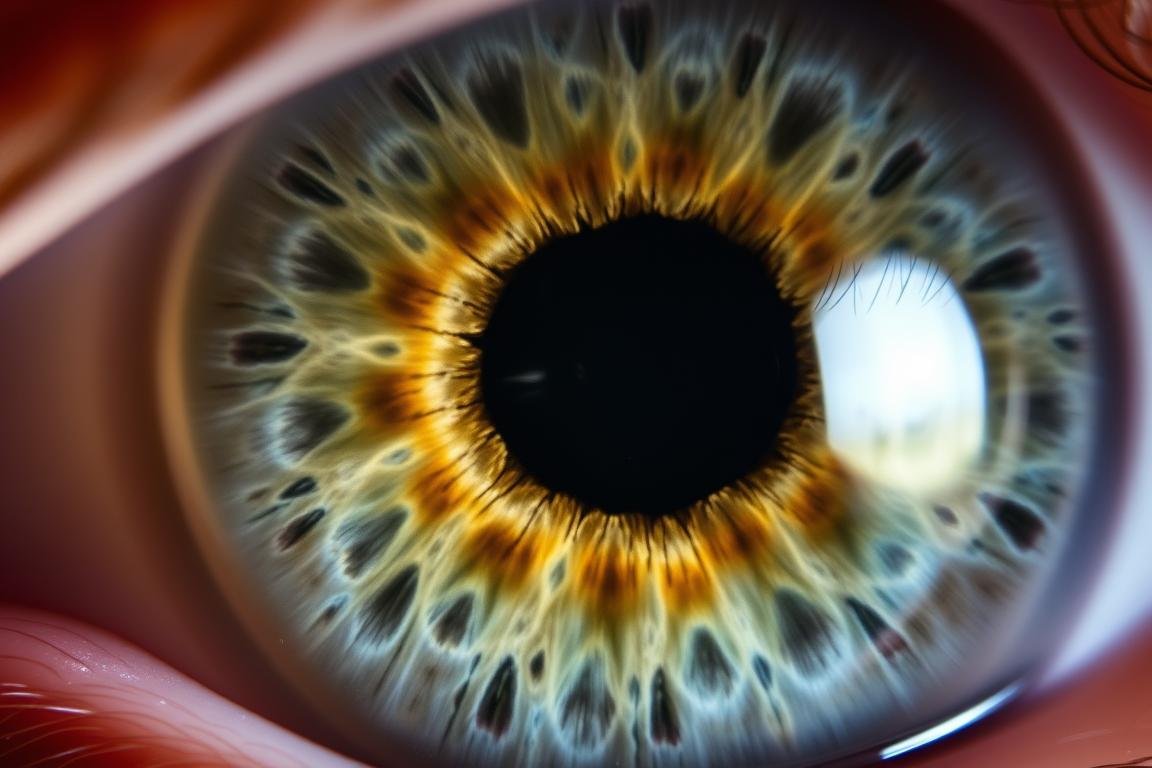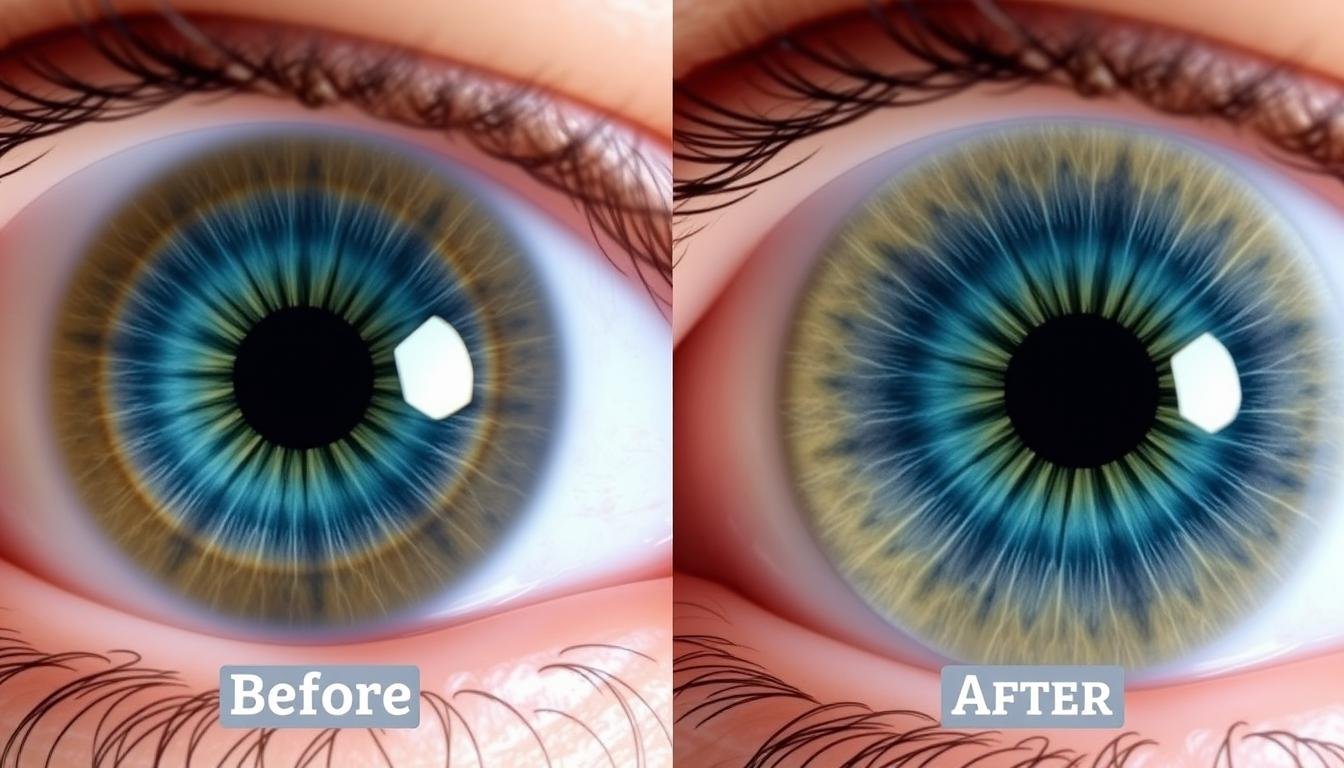IRIDOLOGIA IRIS Diagnosi-L'iride umana-quella parte colorata del tuo occhio-ha affascinato i praticanti di medicina alternativa per secoli. L'iridologia, nota anche come diagnosi di Iris, è la pratica di esaminare l'iride per identificare potenziali problemi di salute in tutto il corpo. I sostenitori ritengono che ogni area dell'iride corrisponda a specifici organi e sistemi del corpo, con cambiamenti nei modelli di iride potenzialmente segnalando problemi di salute sottostanti prima che appaiano altrove. Mentre la medicina convenzionale rimane scettica, l'iridologia continua a guadagnare popolarità tra coloro che cercano approcci olistici alla valutazione della salute. Questo articolo esplora i principi, i metodi e le controversie che circondano questa intrigante tecnica diagnostica.
Introduzione alla diagnostica della medicina alternativa
Metodi diagnostici alternativi come l'iridologia offrono diversi approcci alla valutazione della salute
La medicina alternativa comprende una vasta gamma di tecniche diagnostiche che differiscono dagli approcci medici convenzionali. Questi metodi spesso si concentrano sull'identificazione di squilibri o potenziali problemi di salute prima di manifestarsi come sintomi clinici. Dalla diagnosi di impulsi della medicina cinese tradizionale alla valutazione del Dosha ayurvedico, queste pratiche condividono una filosofia olistica che considera il corpo come un sistema interconnesso.
IRIDOLOGIA IRIS Diagnosi-Iridologia si trova tra questi metodi diagnostici alternativi come una tecnica che utilizza un esame visivo piuttosto che le procedure invasive. I praticanti credono che l'iride funga da “mappa” del corpo, con ogni sezione corrispondente a diversi organi e sistemi. Analizzando i cambiamenti nei motivi, nei colori e nei segni dell'iride, gli iridologi mirano a identificare le aree di preoccupazione e potenziali vulnerabilità per la salute.
A differenza dei test diagnostici convenzionali che si rivolgono a condizioni specifiche, l'iridologia afferma di fornire una panoramica completa dello stato di salute e delle tendenze costituzionali di una persona. Questo approccio si allinea alla filosofia preventiva comune in molti sistemi sanitari alternativi.
Storia dell'iridologia: origini del XIX secolo

Ignaz von Peczely è ampiamente accreditato come il padre della moderna iridologia
Mentre alcuni sostenitori sostengono che le forme di esame dell'iride esistevano nell'antico Egitto, in Cina e in India oltre 3.000 anni fa, l'iridologia moderna traccia le sue radici all'Europa del XIX secolo. La pratica è più comunemente attribuita al medico ungherese Ignaz von Peczely, che sviluppò le sue teorie nel 1860.
Secondo i resoconti popolari, l'interesse di Von Peczely è iniziato durante l'infanzia quando notò che una striscia oscura appare nell'iride di un gufo dopo che l'uccello aveva sofferto di una gamba rotta. Questa osservazione lo ha portato a ipotizzare una connessione tra segni di iride e trauma fisico o malattia. Come medico, in seguito ha ampliato questa teoria studiando i suoi pazienti’ Iris e modelli correlati con le loro condizioni di salute note.
Nel 1881, von Peczely pubblicò le sue prime regioni di mappatura dei grafici dell'iride dell'iride a organi e sistemi corporei specifici. Nello stesso periodo, l'omeopata svedese Nils Liljeqist ha sviluppato indipendentemente teorie simili dopo aver osservato cambiamenti nella sua stessa iris a seguito di farmaci con chinino e iodio.
La pratica si diffuse in tutta Europa all'inizio del XX secolo, con contributi significativi di praticanti tedeschi come il pastore Emanuel Felke. Negli Stati Uniti, l'iridologia ha guadagnato importanza negli anni '50 attraverso il lavoro di Bernard Jensen, un chiropratico che ha perfezionato le classifiche dell'iride e ha promosso la pratica come parte degli approcci di guarigione naturali.
Principi fondamentali dell'iridologia

Gli intricati modelli dell'iride umana costituiscono la base dell'analisi dell'iridologia
L'iridologia è fondata su diversi principi chiave che guidano i professionisti nella loro analisi. Comprendere questi concetti fornisce informazioni su come gli iridologi si avvicinano alla diagnosi dell'iride:
L'iride come micromap
IRIDOLOGIA IRIS Diagnosi: il principio fondamentale dell'iridologia è che l'iride funziona come una mappa dettagliata dell'intero corpo. Si ritiene che ogni area dell'iride corrisponda a organi specifici, ghiandole e sistemi del corpo. Questa mappatura segue una disposizione logica, con aree che rappresentano la testa nella parte superiore dell'iride e quelle che rappresentano i piedi nella parte inferiore.
Valutazione costituzionale
Gli iridologi ritengono che la struttura di base e il colore dell'iride rivelino le predisposizioni genetiche di una persona e i punti di forza o di debolezza intrinseci. Si ritiene che questi fattori costituzionali indicano quali sistemi corporei possono richiedere un ulteriore supporto o sono più vulnerabili a specifici problemi di salute.
Relazione riflessiva
Secondo la teoria dell'iridologia, l'iride si collega a tutti i tessuti del corpo attraverso il sistema nervoso e mostra cambiamenti in risposta alle condizioni dei tessuti. Questa relazione riflessiva consente presumibilmente all'iride di fungere da indicatore di cambiamenti che si verificano in tutto il corpo.
Accumulo di tossine
Molti iridologi ritengono che i segni specifici nell'iride indicano l'accumulo di tossine o prodotti di scarto nei corrispondenti tessuti del corpo. Questi segni possono apparire come scolorimento, punti o cambiamenti strutturali nelle fibre di Iris.
Questi principi formano la base teorica per la pratica dell'iridologia, sebbene sia importante notare che non sono stati validati dalla ricerca medica convenzionale.
Mappatura del grafico Iris: correlazioni di organi

Mappatura dei grafici di iridologia zone di iris specifiche agli organi e ai sistemi del corpo corrispondenti
La tabella di iridologia è lo strumento principale utilizzato dai professionisti per interpretare i segni di iride. Questi grafici divide l'iride in circa 80-90 zone, ciascuna corrispondente a diverse parti del corpo. Mentre esistono varie versioni, la maggior parte segue principi organizzativi simili:
Organizzazione del grafico di base
L'iride è in genere divisa come una faccia dell'orologio, con zone disposte in anelli concentrici. Si ritiene che l'iride destra corrisponda al lato destro del corpo, mentre l'iride sinistra riflette il lato sinistro. Il grafico generalmente segue questa disposizione:
- Zona pupillare (anello interno): Associato agli organi digestivi e al sistema nervoso autonomo
- Zona ciliare (anello centrale): Collegato a muscoli, circolazione e sistemi linfatici
- Zona periferica (anello esterno): Collegato a pelle, estremità e strutture scheletriche
Mappatura direzionale
La maggior parte dei grafici di iridologia seguono correlazioni direzionali dove:
- La parte superiore dell'iride (posizione delle 12) corrisponde alla testa e al cervello
- Il lato destro (3 in punto) si riferisce a organi come il fegato e la cistifellea
- Il fondo (6 in punto) si collega alle estremità inferiori e agli organi pelvici
- Il lato sinistro (9 in punto) si collega al cuore e alla milza
IRIDOLOGIA IRIS Diagnosi-practicers usano questi grafici per identificare quali sistemi corporei potrebbero essere influenzati in base a dove appaiono i segni nell'iride. Ad esempio, un punto oscuro nella posizione delle 3 nella destra iris potrebbe essere interpretato come indicante stress epatico o disfunzione.
Come viene eseguita l'analisi dell'iride

Gli esami di iridologia moderni usano spesso telecamere specializzate e attrezzature per ingrandimento
L'analisi dell'iride coinvolge diversi passaggi e tecniche che i professionisti usano per esaminare e interpretare i modelli agli occhi di una persona:
Strumenti di esame
I moderni iridologi usano vari strumenti per condurre i loro esami:
- Penna: Per l'illuminazione di base dell'iride
- Lente ingrandimento: Osservare dettagli fini e segni sottili
- Iridology Camera: Attrezzatura specializzata che cattura immagini ad alta risoluzione dell'iride
- Software di analisi digitale: Programmi che migliorano e analizzano le fotografie dell'iride
Il processo di esame
Una tipica sessione di iridologia segue questi passaggi:
- Storia della salute: Il praticante inizia prendendo una storia di salute dettagliata per comprendere le condizioni e le preoccupazioni esistenti.
- ESAME IRIS: L'iridologo esamina entrambe le iridi sotto una buona illuminazione, spesso scattando fotografie per un'analisi dettagliata.
- Identificazione del modello: Il praticante identifica vari segni, colori e caratteristiche strutturali nell'iride.
- Confronto del grafico: Queste osservazioni vengono confrontate con un diagramma di iridologia per determinare quali sistemi corporei potrebbero essere influenzati.
- Valutazione: L'iridologo fornisce una valutazione delle potenziali vulnerabilità della salute in base alle loro osservazioni.
Cosa cercano gli iridologi
Durante un esame, gli iridologi prestano attenzione a diverse caratteristiche chiave:
- Colore dell'iride: Si ritiene che il colore di base (blu, marrone, miscelato) indichi il tipo costituzionale
- Struttura in fibra: Il modello e la densità delle fibre di iris si presumibilmente rivelano predisposizioni genetiche
- Lesioni e segni: Macchie scure, aree bianche o linee che possono indicare problemi di salute specifici
- Anelli e zone: Modelli circolari che potrebbero suggerire condizioni croniche o risposte allo stress
- Cambiamenti di pigmentazione: Variazioni di colore che potrebbero indicare l'infiammazione o l'accumulo di tossine
Presunti approfondimenti sulla salute dai modelli di iride

I modelli dichiarati indicano problemi di sistema digestivo

I modelli dichiarati indicano problemi di sistema circolatorio
Gli iridologi affermano di identificare numerose condizioni di salute e tendenze attraverso l'analisi dell'iride. Mentre queste affermazioni mancano di convalida scientifica, i seguenti sono intuizioni comunemente citate che i professionisti credono possano essere raccolti dai modelli di Iris:
Condizioni comunemente identificate
| Funzione Iris | Posizione | Presunta indicazione sanitaria |
| Anello attorno all'iride (anello di sodio) | Bordo esterno dell'iride | Ipertensione, ritenzione di sale, stress cardiovascolare |
| Macchie marroni | Zona epatica (Iris destra) | Disfunzione epatica, accumulo di tossine |
| Nuvolosità bianca | Zona polmonare | Debolezza respiratoria, accumulo di muco |
| Linee radiali | Zona intestinale | Problemi digestivi, potenziale per l'intestino irritabile |
| Macchie scure | Zona renale | Stress renale o disfunzione |
Valutazione costituzionale
Oltre a condizioni specifiche, gli iridologi ritengono di poter determinare il tipo costituzionale di una persona in base al colore e alla struttura dell'iride:
- Tipo linfatico (Iris blu): Potenzialmente più vulnerabile alle questioni linfatiche e respiratorie
- Tipo ematogenico (iride marrone): Può avere tendenze verso le condizioni del sangue e del fegato
- Tipo misto: Mostra le caratteristiche di più tipi costituzionali con varie tendenze sanitarie
Indicatori di stress e infiammazione
Gli iridologi cercano anche segni di stress generale e infiammazione in tutto il corpo:
- Anelli di stress bianco: I modelli circolari si ritiene indicano la tensione del sistema nervoso
- Scolorimento giallastro: Potenzialmente suggerendo l'infiammazione negli organi corrispondenti
- Aree oscurate: Possibilmente indicando lo stress cronico in specifici sistemi corporei
Esempi di case study: scenari ipotetici

Ipotetico confronto prima/dopo che mostra i cambiamenti dell'iride a seguito delle modifiche dello stile di vita
Per illustrare come gli iridologi applicano i loro principi nella pratica, considera questi ipotetici casi studio. Si noti che questi esempi sono previsti solo a scopo educativo e non costituiscono prove o consigli medici.
Caso di studio 1: problemi digestivi
Profilo del cliente: Femmina di 42 anni con gonfiore cronico, movimenti intestinali irregolari e affaticamento
Osservazioni dell'iride: L'iridologo ha notato linee radiali scure nella zona intestinale (circa le 6 di posizione) di entrambe le iridi, insieme a segni bianchi nell'area dello stomaco.
Interpretazione: Questi schemi sono stati interpretati come indicando una potenziale debolezza digestiva, in particolare nel tratto intestinale, con possibile infiammazione nel rivestimento dello stomaco.
Raccomandazioni: Il praticante ha suggerito modifiche dietetiche (eliminando potenziali irritanti come glutine e latticini), erbe digestive e tecniche di riduzione dello stress.
Risultato ipotetico: Dopo aver implementato cambiamenti dietetici e gestione dello stress, il cliente ha riportato un miglioramento dei sintomi. Un esame di iris di follow-up ha presumibilmente mostrato marcatori di infiammazione ridotti.
Caso di studio 2: stress e affaticamento surrenalico
Profilo del cliente: Maschio di 35 anni con affaticamento cronico, disturbi del sonno e difficoltà a gestire lo stress
Osservazioni dell'iride: L'iridologo ha identificato gli anelli di stress bianco pronunciato in entrambe le iridi e oscurarsi nella zona delle ghiandole surrenali.
Interpretazione: Queste caratteristiche sono state interpretate come indicando lo stress cronico che colpisce le ghiandole surrenali, portando potenzialmente alla fatica surrenale.
Raccomandazioni: Il praticante ha suggerito erbe adattogene, vitamine del complesso B, igiene del sonno migliorate e tecniche di gestione dello stress.
Risultato ipotetico: Dopo tre mesi, il cliente ha riportato una migliore resilienza di energia e stress. L'iridologo ha affermato che l'esame di follow-up ha mostrato ridotti indicatori di stress nell'iride.
Nota importante: Questi casi studio sono ipotetici esempi di come l'iridologia potrebbe essere applicata nella pratica. Non costituiscono prove scientifiche per l'efficacia dell'iridologia come metodo diagnostico. Consultare sempre gli operatori sanitari qualificati per la diagnosi e il trattamento medico.
Applicazioni moderne nella salute olistica

I moderni centri sanitari olistici spesso incorporano l'iridologia insieme ad altre pratiche complementari
Nonostante lo scetticismo scientifico, l'iridologia continua a essere praticata in vari contesti sanitari olistici. Ecco come viene generalmente applicato nelle pratiche di salute alternative contemporanee:
Integrazione con altre modalità
I praticanti moderni usano raramente l'iridologia in isolamento. Invece, è comunemente integrato con altri approcci olistici:
- Naturopatia: Molti medici naturopatici includono l'iridologia come componente del loro toolkit di valutazione
- Erborismo: Gli erboristi possono usare l'analisi dell'iride per aiutare a determinare quali rimedi a base di erbe potrebbero essere più vantaggiosi
- Consulenza nutrizionale: Alcuni nutrizionisti incorporano l'iridologia per identificare potenziali carenze nutrizionali o debolezze digestive
- Medicina tradizionale cinese: Alcuni professionisti del TCM combinano l'analisi dell'iride con metodi diagnostici tradizionali come la diagnosi di impulsi e linguetti
Progressi tecnologici
L'iridologia moderna ha abbracciato le innovazioni tecnologiche:
- Iridologia digitale: Le telecamere ad alta risoluzione e software specializzato consentono fotografia e analisi dettagliate dell'iride
- Valutazione computerizzata: Alcuni sistemi utilizzano algoritmi per identificare e interpretare i segni di iride
- Consultazioni remote: La tecnologia digitale consente ai professionisti di analizzare le fotografie dell'iride inviate elettronicamente
Approccio preventivo
Gli iridologi contemporanei in genere enfatizzano la prevenzione piuttosto che la diagnosi:
- Identificare le tendenze costituzionali che possono predisporre gli individui a determinati problemi di salute
- Suggerendo modifiche allo stile di vita a supporto dei sistemi del corpo potenzialmente vulnerabili
- Monitoraggio delle variazioni nel tempo per valutare l'impatto degli interventi sanitari
Mentre le moderne applicazioni si sono evolute con la tecnologia, è importante notare che i principi fondamentali rimangono in gran parte invariati dalle origini della pratica del XIX secolo.
Accettazione scientifica e controversie

La ricerca scientifica ha esaminato la validità delle affermazioni diagnostiche dell'iridologia
La comunità scientifica ha ampiamente esaminato le affermazioni dell'iridologia e il consenso tra ricercatori medici e organizzazioni sanitarie è in gran parte scettico. Comprendere entrambe le parti di questo dibattito è importante per chiunque considera l'iridologia.
Argomenti di sostenitori
- Storie di successo aneddotiche da praticanti e clienti
- La natura non invasiva dell'esame
- Valore potenziale come strumento di valutazione complementare
- Alcuni piccoli studi che suggeriscono correlazioni tra le caratteristiche dell'iride e alcune condizioni
- La prospettiva olistica che fornisce sulla valutazione della salute
Critiche scientifiche
- Mancanza di meccanismo anatomico o fisiologico per spiegare come gli organi interni influenzerebbero l'aspetto dell'iride
- Studi multipli controllati non hanno dimostrato l'accuratezza diagnostica
- Risultati incoerenti tra diversi iridologi che esaminano la stessa iride
- Potenziale per una diagnosi medica adeguata ritardata se si basa sull'iridologia
- Assenza di formazione o regolamentazione standardizzati in molte regioni
Risultati della ricerca chiave
Diversi studi scientifici hanno valutato le affermazioni diagnostiche dell'iridologia:
- Uno studio del 1979 pubblicato sul Journal of American Medical Association ha scoperto che gli iridologi non potevano rilevare accuratamente la malattia della cistifellea esaminando le fotografie delle iridi.
- Una revisione sistematica del 2000 pubblicata negli Archives of Ophthalmology lo ha concluso “L'iridologia non è supportata da prove scientifiche” Dopo aver analizzato tutte le prove controllate disponibili.
- Numerosi studi hanno dimostrato che quando diversi iridologi esaminano la stessa iride, spesso raggiungono diverse conclusioni sullo stato di salute della persona.
Posizione delle organizzazioni mediche
Le principali organizzazioni mediche e scientifiche generalmente non riconoscono l'iridologia come un metodo diagnostico valido:
- L'American Academy of Ophthalmology non sostiene l'iridologia
- L'American Medical Association considera l'iridologia non supportata da prove scientifiche
- La maggior parte delle scuole di medicina non include l'iridologia nei loro curricula
“La base fisica per la diagnosi iridologica non è mai stata stabilita scientificamente… Studi controllati hanno dimostrato che l'iridologia non ha valore come strumento diagnostico.”
- Stephen Barrett, MD, Quackwatch
Raccomandazioni sulla sicurezza per i lettori

Un approccio equilibrato include la consulenza sia professionisti convenzionali che complementari
Se sei interessato a esplorare l'iridologia, considera queste raccomandazioni sulla sicurezza per assicurarti di prendere decisioni informate sulla tua salute:
Linee guida per un'esplorazione sicura dell'iridologia
- Non ritardare l'assistenza medica convenzionale: Non sostituire mai l'iridologia con una corretta diagnosi medica e un trattamento di sintomi o condizioni gravi.
- Scegli praticanti qualificati: Se decidi di consultare un iridologo, cerca qualcuno con formazione formale e certificazione da un'organizzazione riconosciuta.
- Mantenere lo scetticismo: L'approccio afferma criticamente e diffidare nei confronti dei professionisti che fanno diagnosi definitive o promettono cure basate esclusivamente sull'esame dell'iride.
- Consideralo complementare: Considera l'iridologia come un complemento potenzialmente interessante all'assistenza sanitaria convenzionale piuttosto che a una sostituzione.
- Discuti con il tuo medico: Informare il tuo operatore sanitario primario su eventuali pratiche alternative che stai esplorando.
- Guarda le bandiere rosse: Essere cauti nei confronti dei praticanti che scoraggiano le cure mediche convenzionali, vendono costosi integratori proprietari o fanno affermazioni stravaganti.
Quando cercare cure mediche convenzionali
Consultare sempre prontamente un operatore sanitario autorizzato se si sperimenta:
- Dolore grave o persistente
- Perdita di peso inspiegabile
- Difficoltà a respirare
- Cambiamenti nella visione o nell'aspetto degli occhi
- Febbre persistente
- Eventuali sintomi che ti riguardano
Interessato a saperne di più sugli approcci sanitari olistici?
Mentre l'iridologia rimane controversa, molte persone trovano valore nell'esplorazione di varie pratiche sanitarie complementari. Se sei curioso degli approcci olistici al benessere, considera la consulenza con professionisti qualificati che possono fornire informazioni equilibrate.
Trova professionisti della salute olistica certificati
Conclusione: bilanciamento della curiosità con il pensiero critico
L'iridologia Iris Diagnosi presenta un concetto intrigante: che i nostri occhi potrebbero rivelare intuizioni sulla nostra salute generale. Mentre praticanti e sostenitori credono nel suo valore come strumento di valutazione, la comunità scientifica rimane non convinta a causa della mancanza di prove empiriche e plausibilità biologica.
Come per molte pratiche sanitarie alternative, l'approccio più equilibrato può essere uno scetticismo a mentalità aperta. Ci sono pochi danni nell'esplorazione dell'iridologia come pratica complementare se ti interessa, a condizione che tu mantenga aspettative realistiche e continui a fare affidamento sulla medicina convenzionale per la diagnosi e il trattamento dei problemi di salute.
Sia che tu consideri l'iridologia come un affascinante strumento di valutazione olistica o una pseudoscienza non dimostrata, la decisione di incorporarla nel tuo percorso di salute è personale. Rimanendo informato su entrambe le prospettive e dando la priorità alle cure basate sull'evidenza, puoi fare scelte che supportano al meglio il tuo benessere generale.

